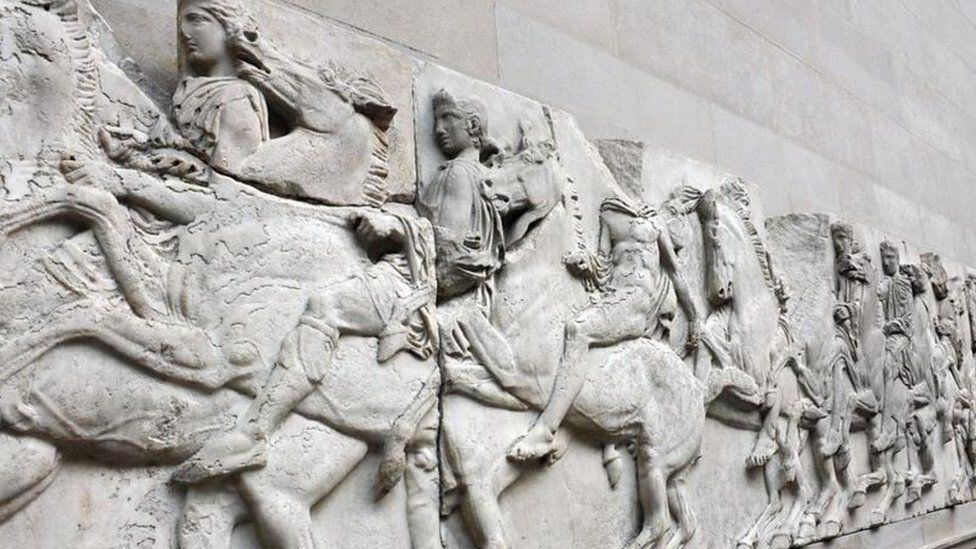The Vatican has returned three fragments of the Parthenon sculptures to Greecein a move that has been described as a “symbol of friendship.”
The decision to return the 2,500-year-old marble pieces was announced by Pope Francis last year.
Look: Protests in Greece intensify over railway tragedy that left 57 dead
One of the fragments corresponds to the head of a horse, the other to a bearded man and the third to the head of a child.
Greece hopes the gesture will encourage other foreign institutions who own sculptures taken from the Parthenon to return them.
Approximately 50% of the original Parthenon sculptures have survived and of these, almost half are in the British Museum in London.
“Today’s ceremony, similar to the gesture of the government of Sicily and the Republic of Italy a few months ago, marks the path that we could follow, that everyone could follow, to restore the unity of the Parthenon,” the culture minister said on Friday. from Greece, Linda Mendoni.
When the marbles were returned, dignitaries shook hands and smiled for the cameras, including the head of the Greek Orthodox Church, Archbishop Leronymos.
“My personal desire with all my heart is that this initiative be imitated by others. Pope Francis showed that this is possible and significant,” said the religious leader.
For centuries, the marble fragments now returned had been part of the papal collection and the Vatican museums.
Since the early 20th century, Greece has been trying to recover them from the Vatican and other European collections.
At the beginning of the 19th century, dozens of marbles were removed from the Parthenon frieze under the orders of the Scottish aristocrat and soldier Thomas Bruce.known as Lord Elgin.
In 1816, Bruce sold the pieces to the British government, which then exhibited them in the British Museum, where they are known as the “Elgin Marbles”.
possible deal

There were some reports indicating that the president of the British Museum, George Osborne, was close to reaching an agreement with Greece.
But in January, then-British Culture Secretary Michele Donelan said the sculptures “belong here,” in the UK.
Donelan told the BBC that the chairman of the British Museum was misunderstood and that returning the sculptures permanently to Greece is “not the intention” of the British government as it would “open a Pandora’s box”.
“It would open the door for all the content in our museums to be questioned,” he said.
The British Museum is prohibited by law from permanently returning art pieces to Greece.
However, it is speculated that an agreement could be reached so that the sculptures are given on loan to Athens in exchange, that is, bringing to the United Kingdom other objects from the Classical Period that have never before been seen outside of Greece.
Source: Elcomercio
I am Jack Morton and I work in 24 News Recorder. I mostly cover world news and I have also authored 24 news recorder. I find this work highly interesting and it allows me to keep up with current events happening around the world.

:quality(75)/cloudfront-us-east-1.images.arcpublishing.com/elcomercio/GE2TCNRNGAZS2MRVKQYDAORRGU.jpg)




:quality(75)/cloudfront-us-east-1.images.arcpublishing.com/elcomercio/QXM7XV2HEFHPNOVYZBJDEC6VJQ.png)
